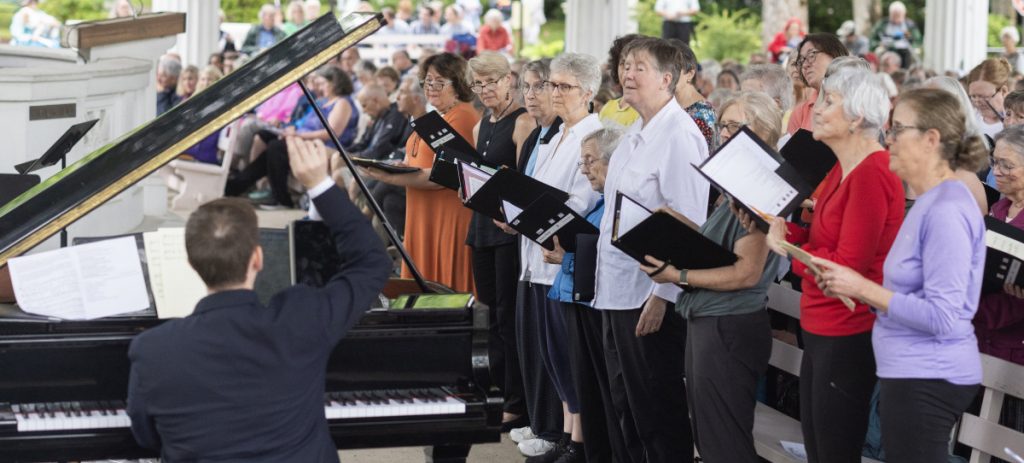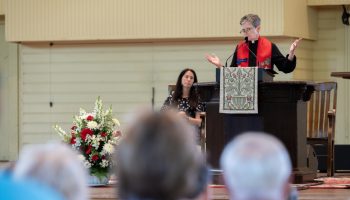
Mary Lee Talbot
Staff Writer
The music of Taizé is known world-wide for its simple, meditative character.
This week’s Sacred Song Service, at 8 p.m. Sunday in the Amphitheater, will help Chautauquans “Come and Find the Quiet Center: Worship in the Spirit of Taizé.”
The service, designed by Joshua Stafford, director of sacred music and Jared Jacobsen Chair for the Organist, will combine traditional pieces of music from the Sacred Song Service with music from Taizé to provide a worship experience reminiscent of worship at Taizé.
The Taizé community was founded in 1940 by Brother Roger when he was 25 years old. During World War II, Brother Roger and his sister, Genevieve, ministered to refugees moving from occupied France. After World War II, Brother Roger and the community of seven brothers welcomed people from around the world for a week of meditation and prayer in the Taizé community. The 100 brothers who are part of the community today include Protestants and Catholics.
Pope John Paul II, who met Brother Roger during the Vatican III Council, visited Taizé while he was Archbishop of Krakow in 1962 and 1968; he visited as pope in 1986.
“… One passes through Taizé as one passes close to a spring of water,” he said to the people who had come to participate in his visit. “The traveler (sic) stops, quenches his thirst and continues on his way. The brothers of the community, you know, do not want to keep you. They want, in prayer and silence, to enable you to drink the living water promised by Christ, to know his joy, to discern his presence, to respond to his call, then to set out again to witness to his love and to serve your brothers and sisters in your parishes, your schools, your universities, and in all your places of work.”
The music of Taizé has become part of worship around the world. Its structure includes a simple melody that repeats over and over, called ostinato, and is meant to be a musical version of centering prayer. The words are usually simple phrases, lines from the Psalms or other scripture.




